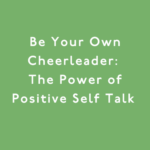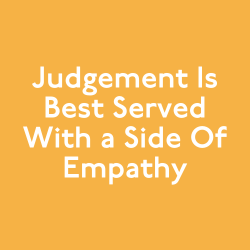Written by Founder and CEO, Sara Potler LaHayne
Being creative is a vulnerable process. Creative expression pushes us to better understand our own emotions and can improve our ability to authentically connect with one another. A 2012 study published in the journal The Arts in Psychotherapy explains the concept of empathetic kinesthetic perception and it demonstrates that utilizing creativity, in particular movement, helps us gain a deeper understanding of our feelings than we can through words alone.
How can we use creative expression and the concept of empathetic kinesthetic perception to build core social emotional learning competencies for students? First, we must prioritize creating school and classroom environments that will feel safe and supportive to our students before we dive headfirst into the creative process. Once we’ve built this environment successfully, we can carve out the time to prioritize this important work and open doors for validation.
Create Comfortable Classroom Environments
District leaders, school leaders, and teachers need to create an environment where students feel comfortable and safe sharing their emotions. That might mean modeling how to identify and express both positive and negative emotions, developing a common language throughout the school and district for students to express and manage emotions, and creating norms that encourage a culture of self-expression and mutual respect.
Build Time for SEL Into the Schedule
Building social emotional learning into the daily school schedule allows students to flex their social and emotional skills, just as they would academic skills. In order to become confident and successful at emotional identification, expression, and management, it needs to become a daily practice. Similar to most other health routines, we can’t engage every so often and hope to see the results. These social emotional learning routines need to become integrated into students’ daily lives. We find that the start of the school day and the end of the school day are ideal times for schools to build this in, but it’s important to identify the time that will work best with your teachers and students’ needs. For some schools this means after lunch or recess, during homeroom, or before a particularly stressful subject area.
See also: Social emotional learning programs for students
Validate and Acknowledge Emotions
In order to build strong social awareness and relationship skills as well as empathy, we need to give students time to share and acknowledge one another’s emotions. It can be helpful to provide students with sentence frames as a starting point for affirmation. By affirming one another’s emotions, we are delivering a strong message that we see, hear and better understand each other. Not only will this help students develop empathy, but it will also help to improve school culture.
Start the Integration
Now that a supportive classroom environment has been established, it’s time to start integrating creative expression into social emotional learning. There are countless ways to utilize creative expression as a means to social emotional learning development. Journaling and drawing can be an easy way to start, as students increase their comfort level. As the school year continues, consider adding sounds and movements as outlets for creative expression. One quick and easy check-in technique is have each student make a sound for how they’re feeling that day. You can have them verbally share a short sentence explaining their sound, or leave the sound as a stand alone. You can also have the rest of class repeat the sound back as a form of affirmation.
Similarly, you can incorporate movement by having students share one feeling word and a movement that represents that feeling. Have the rest of the class mirror the movement back to provide affirmation. For teachers this is beneficial because it provides time for a quick and easy check-in to see how your students are doing. As a peer, it will help classmates better understand each other, and hopefully with some practice, develop the social awareness to be able to adjust their interactions with one another based off what those around them are feeling.
By taking the time to build a supportive classroom culture, providing clear models and creating the space for affirmation and validation we can help students become more comfortable in expressing their emotions, which in turn will help them better understand themselves and those around them.
Here are two videos that walk students through creative exercises, which you can use in your classroom today:
-
Emotional ABCs (elementary grade levels)
This article was originally published by EdWeek Market Brief on February 5th, 2019.
The Nation’s Leading SEL Company
Move This World is the leading provider of social emotional learning (SEL) multimedia experiences for students, teachers, and families. Our SEL programs are customized for PreK-12 students and are delivered through short interactive lessons with the goal of empowering students to navigate the rapidly-changing realities of their world – both in the classroom and throughout their lives. The impactful yet simple Move This World SEL curriculum allows educators and families to incorporate Social Emotional Learning into their schedules every day, without planning or prep.
Contact us to learn more about SEL Grants and bringing Social Emotional Learning to your classroom.
Related links:










